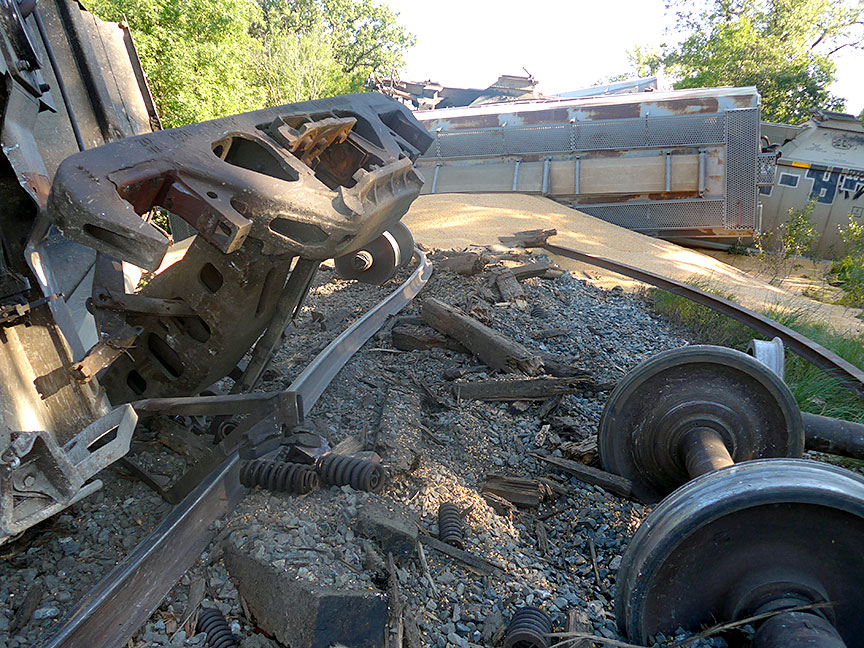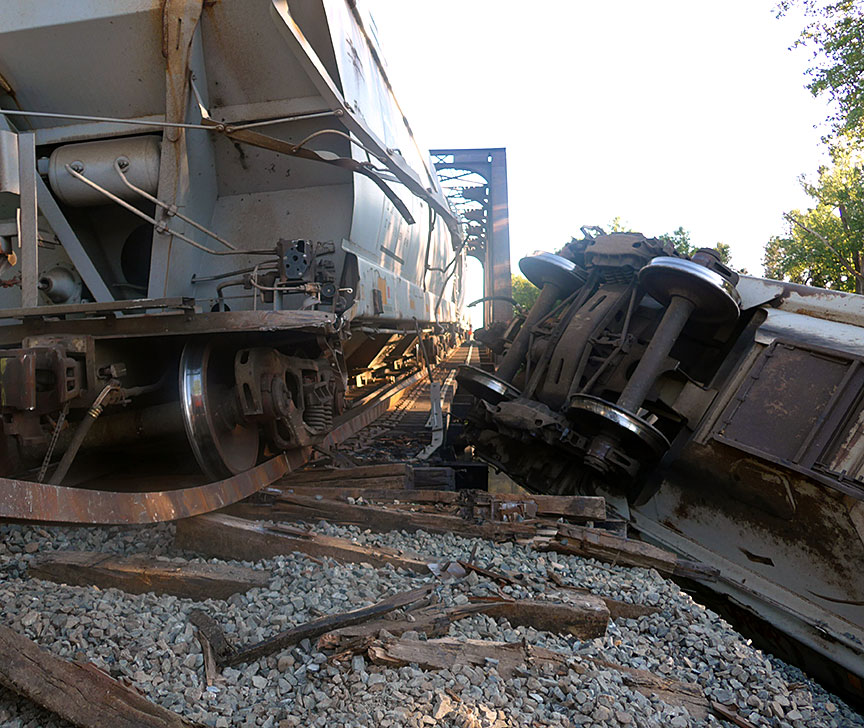Main-track train derailment
Canadian Pacific Railway
Freight train 369-377
Mile 53.57, Emerson Subdivision
Dominion City, Manitoba
The occurrence
On , at 1250 Central Daylight Time, Canadian Pacific Railway unit freight train 369-377 was proceeding northward at 40 mph on the Emerson Subdivision when it experienced a train-initiated emergency brake application. A subsequent inspection determined that 22 covered hopper cars loaded with corn had derailed while exiting a bridge (Mile 53.60) near the town of Dominion City, Manitoba. There were no injuries.
Media materials
News releases
Thermite weld failure resulting from persistent track conditions led to August 2017 derailment near Dominion City, Manitoba
Read the news release
Deployment notice
TSB deploys a team of investigators to a train derailment near the town of Dominion City, Manitoba
The Transportation Safety Board of Canada (TSB) is deploying a team of investigators to the site of a Canadian Pacific Railway train derailment near the town of Dominion City, Manitoba. The train was transporting grain; no dangerous goods were released. The TSB will gather information and assess the occurrence.
Investigation information
Download high-resolution photos from the TSB Flickr page.
Class of investigation
This is a class 3 investigation. These investigations analyze a small number of safety issues, and may result in recommendations. Class 3 investigations are generally completed within 450 days. For more information, see the Policy on Occurrence Classification.
TSB investigation process
There are 3 phases to a TSB investigation
- Field phase: a team of investigators examines the occurrence site and wreckage, interviews witnesses and collects pertinent information.
- Examination and analysis phase: the TSB reviews pertinent records, tests components of the wreckage in the lab, determines the sequence of events and identifies safety deficiencies. When safety deficiencies are suspected or confirmed, the TSB advises the appropriate authority without waiting until publication of the final report.
- Report phase: a confidential draft report is approved by the Board and sent to persons and corporations who are directly concerned by the report. They then have the opportunity to dispute or correct information they believe to be incorrect. The Board considers all representations before approving the final report, which is subsequently released to the public.
For more information, see our Investigation process page.
The TSB is an independent agency that investigates air, marine, pipeline, and rail transportation occurrences. Its sole aim is the advancement of transportation safety. It is not the function of the Board to assign fault or determine civil or criminal liability.

